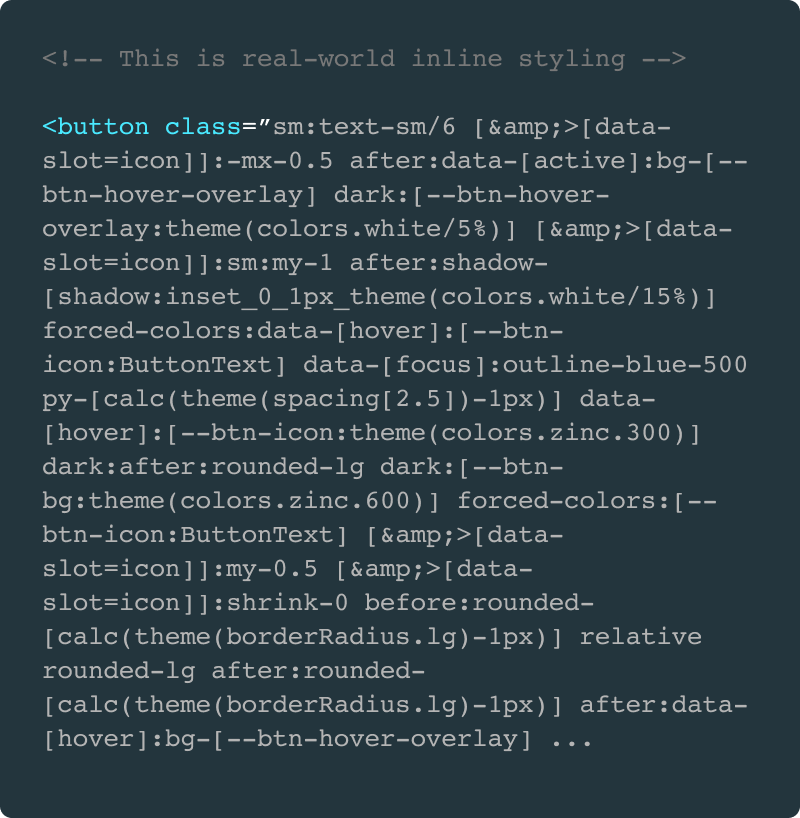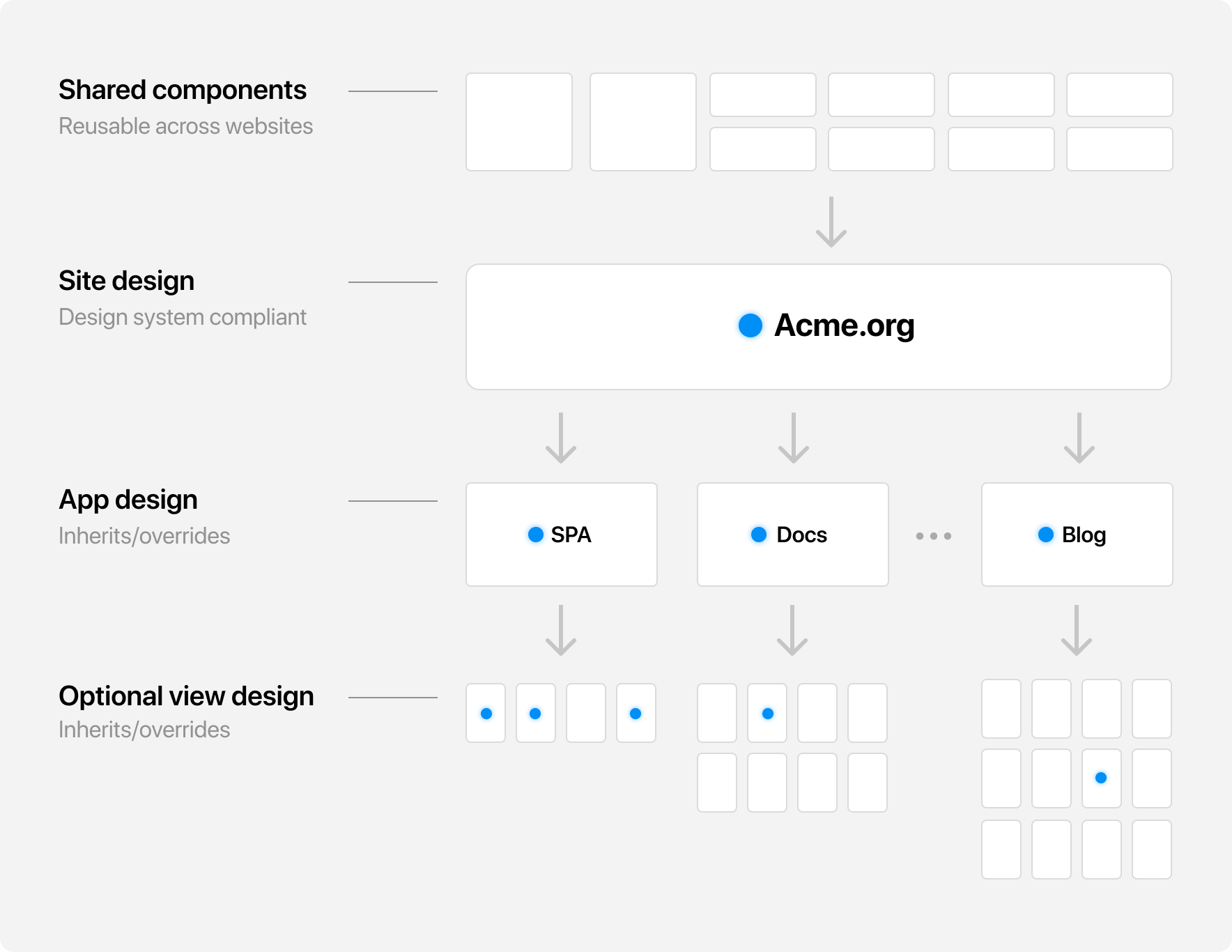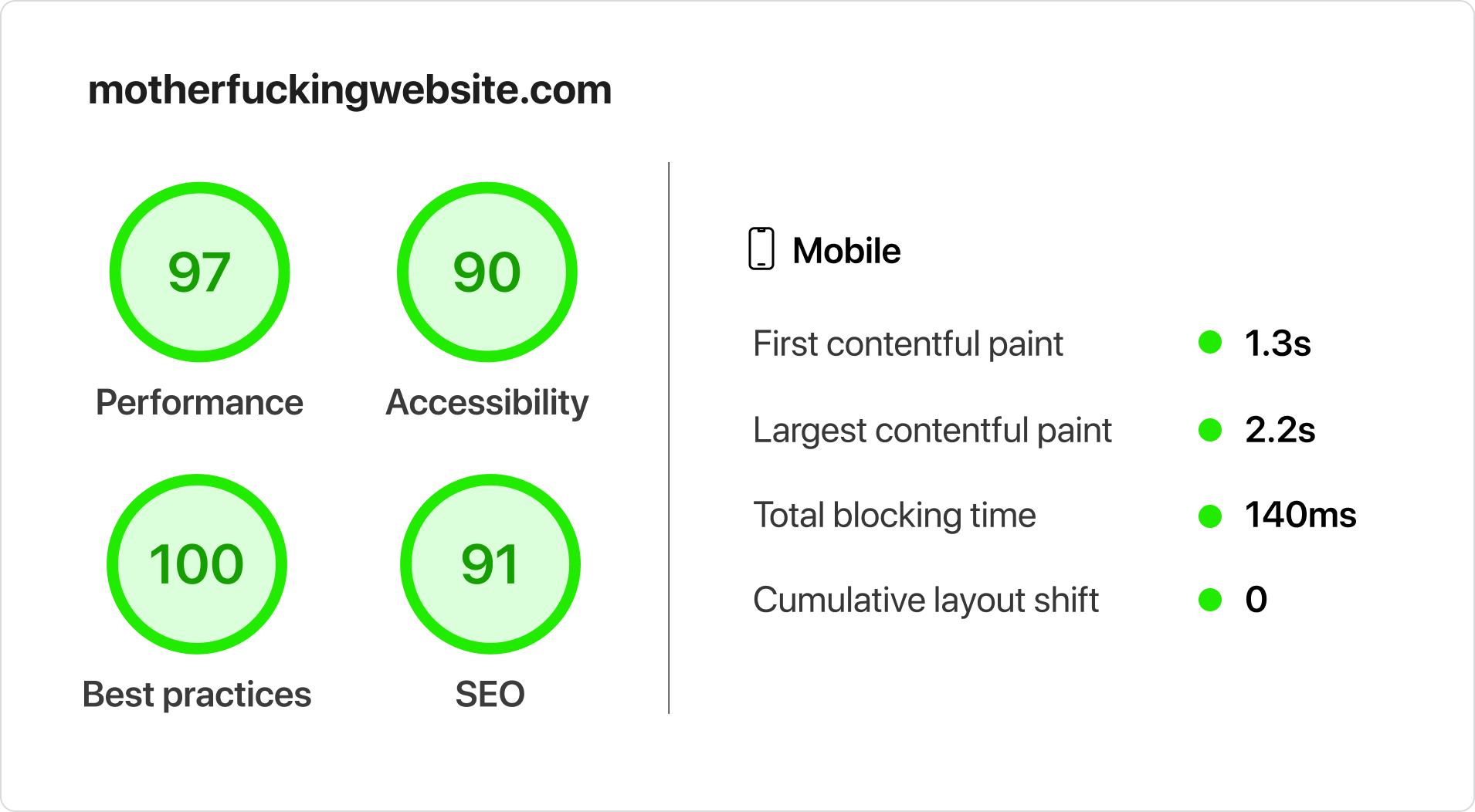Nue + CSS: a better way to style things
Here's a preview of Nue's upcoming approach to styling things on the web. The key difference is minimalism: You can build an entire website with the same amount of CSS that goes into a single Tailwind button. Or even crazier: You can fit three websites to a single Tailwind Catalyst button.

To understand what's happening here, we need to step back and look closer at what has happened to CSS in the past few years:
BEM: Finding order to chaos
CSS is notoriously hard to manage. It takes years to get a hold of it. Between 2008 and 2014 there were several attempts to bring order: OOCSS, BEM, and SMACSS.
However, these systems failed due to their size and verbosity. Developers lost interest in naming patterns like block-name__elem-name_mod-name_mod-val or the 600 different class names introduced by Bootstrap, which was based on SMACSS.

CSS-in-JS: Clean global namespace
In 2014, Christopher Chedeau from Facebook gave birth to the CSS-in-JS movement. The main idea was to get rid of global namespace pollution. He showcased Bootstrap a prime example of bad CSS design.
The idea was a huge success and soon after developers rushed converting their CSS codebases to JavaScript. We saw a flood of new CSS frameworks like Vanilla Extract, Styled JSX, and Emotion
Tailwind: Inline styling
In 2017, Adam Wathan introduced Tailwind — a new kind of CSS framework with a special styling language. The idea was to inline all styling inside a class attribute so that everything could be expressed with HTML only.
Developers loved it: It was an easy way to build good-looking user interfaces with a copy/paste mentality. Backend developers and junior frontend developers were able to build things without understanding how CSS cascade or specificity works.
The tradeoffs
For the most part, CSS-in-JS and Tailwind worked nicely and frontend engineers were pleased. But it was far from roses.
Massive codebases
We're not talking about slightly more
, or just double the size
. We're talking about a situation where a single button has more CSS than a complete, professionally designed website. And the codebases just keep on growing due to the false beliefs about CSS.
Large codebases can draw you down: Small styling changes trigger large compilation chains, potentially involving hundreds of JavaScript files and NPM modules before the browser is hot-reloaded. What should take milliseconds, is suddenly taking seconds.
Technical debt
Things work well if you can just copy/paste components and tweak settings, but it gets wild pretty easily. You end up with a codebase that only specialists can understand:

Single point of responsibility
Today, JavaScript/React developers are responsible for everything. The components are modern-day kitchen sinks
where content, layout, styling, and business logic are stuffed together.
Things that used to be separate, are now under the responsibility of a JavaScript developer. It's hard or impossible for content creators, designers, and CSS developers to participate.
The talent is inefficiently spread when React developers work on issues outside their interests. Engineers are not necessarily the best designers and many of them hate CSS.
Your team could do so much better.
What if...
What if we could break away from all these trade-offs?
Start building websites that look perfect inside out. Where your codebase is ordeer of magnitude smaller and is made out of clean, simple components.
What if we get all the benefits of CSS-in-JS, but none of the problems? No trouble of naming things, nor worrying about cluttering the global namespace.
What if we could offload the burden from JavaScript developers and hand all design/UX work to people who are the absolute masters of that craft?
What would that look like?
1. Cascading CSS architecture
One of the key ideas of Nue is to ditch the large JavaScript ecosystem and go directly with modern CSS, and harness it's power.
Your design is based on a design system
Most companies have drafted some form of design system in software like Figma or Sketch. This system acts as their single source of truth
:

Design system is really a simple concept: You define the master look and feel in a central location and let all your pages inherit from that. Ideally, your design is just a single self-documenting CSS file that even non-technical people can understand. Here are three examples:
Example 1: The Sofa Company
Design (CSS) • Full source • Website
Example 2: Mona Editor
Design (CSS) • Full source • Website
Example 3: Aimee App
Design (CSS) • Full source • Website
Nue makes sure your design is consistently applied across all the pages and components on your website. It automatically binds the correct CSS files to your pages depending on where the page resides. There is no need to tinker with path names with JS/CSS import statements.

The design is separated from the HTML structure so that the system can be controlled by designers and UX developers. This way, non-technical people can create content so that the pages automatically inherit the correct design. And there is no way they can break the design system with local or inline styling.
2. Cleaner way to write HTML and CSS
Nue has its own CSS best practices for writing clear HTML and CSS. The key idea is to leave out all class names that relate to styling and let external CSS take care of the element and/or component look and feel:
<!-- component name is all naming you need -->
<div class="gallery">
<figure>
<figure>
<figure>
...
</div>Naming things and minimalism go hand-in-hand. The more names you have, the more complex your design system API. In most cases, the component name is all the naming you need.
Simple means lean and well-organized CSS that is easy to maintain and scale. There's less room for errors: No global namespace issues, no local breaking points, and no consistency issues. The simpler you design the system, the better. The fewer colors, font weights, elements, components, and variants you have, the better.
3. Ditch JavaScript
When everything is based on a single source of truth, it's trivial to ditch the redundant CSS-in-JS layer in front of your design system, be it Tailwind, CSS Modules, or Vanilla Extract. This makes a simpler stack:
| CSS-in-JS | Tailwind | Nue | |
|---|---|---|---|
| Key idea | Local scoping | Utility classes | Design system |
| Styling with | JavaScript | JavaScript | CSS |
| Conflict resolution | Class name obfuscation | Domain-specific language | Single source of truth |
| Optimization | Tree-shaking + Bundling | One large CSS bundle | Minimalism + Code splitting + Page inlining |
Less coding needed
Sites made with Nue have extremely little CSS. For example, a basic Tailwind button has more styling than a complete Nue-powered website:
The combined amount of CSS in three Nue websites equals the size of a single Tailwind Catalyst button:
Design-system-powered websites stay lean as the site grows:
Leaner sites
motherfuckingwebsite.com is a developer meme from Barry Smith to demonstrate the power of minimalism. It's a text-only website that does not use CSS at all. It loads fast:

A surprising fact is that minimal, inlined CSS gets you to the same performance levels without making compromises on design:

No matter how clever the Rust-based Bundler, optimizing your JavaScript, nothing beats a tiny TCP packet that has everything to render the landing page.
Separation of concerns
Nue breaks you out from the single point of responsibility and offloads the burden from the JavaScript/React engineer for the more talented ones, focusing on that specific field:
Separation of concerns equals scalability: Marketers and technical writers proceed with content, designers and UX developers focus on the user experience, and JavaScript developers perfect the back of the frontend. The same applies for one person projects too — all the UX talent just comes from one head.
Timeless skills and products
CSS is the styling language of the Web

Any developer with a background in CSS can maintain the codebase. And when you come back later, even years later, the codebase is still sound and clear. There is no fear of technical debt because the CSS you write today is valid forever.
We're building the CSS framework of the future
We're building the next version of Nue which contains a thing called global design system, coming out from Brad Frost. We believe it could be the next big thing in CSS:
